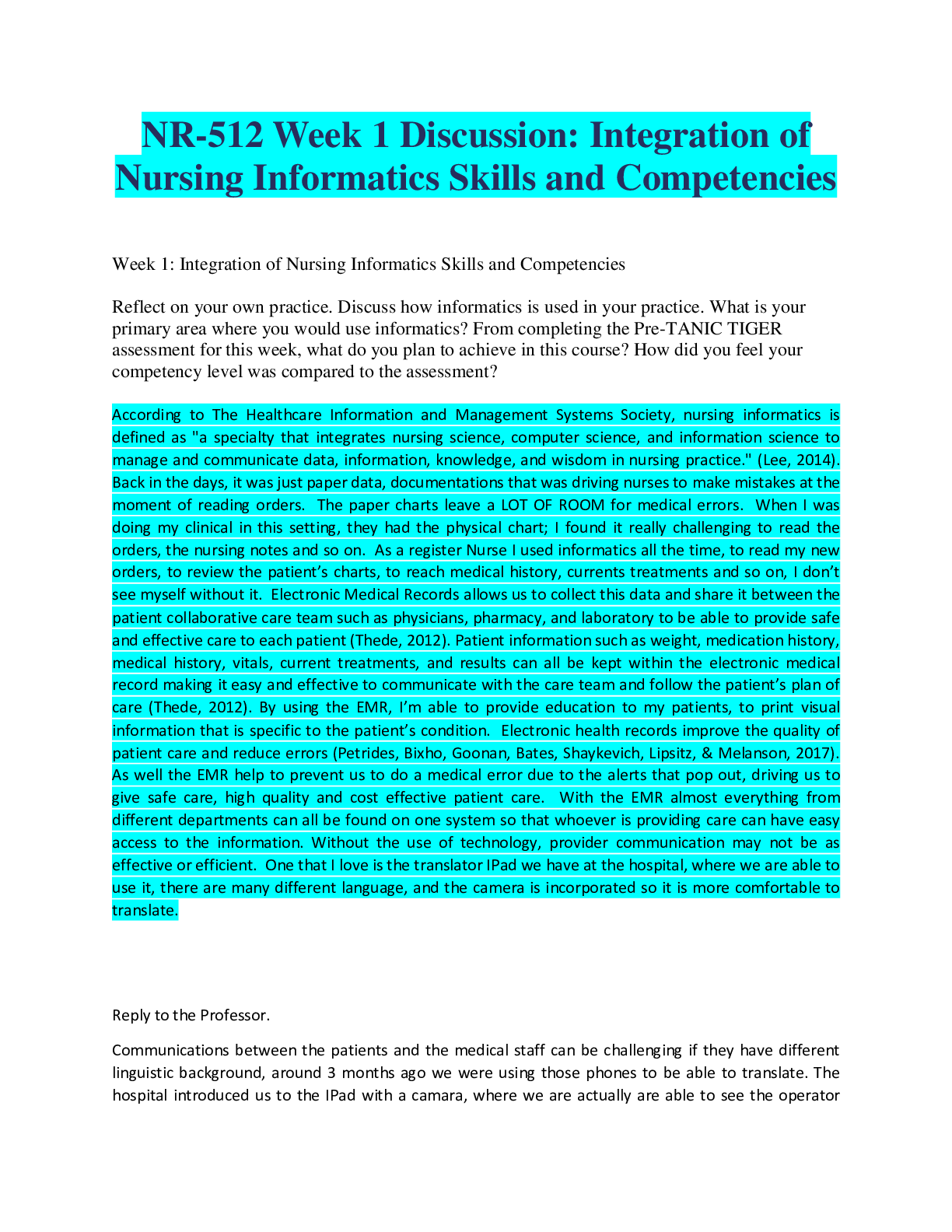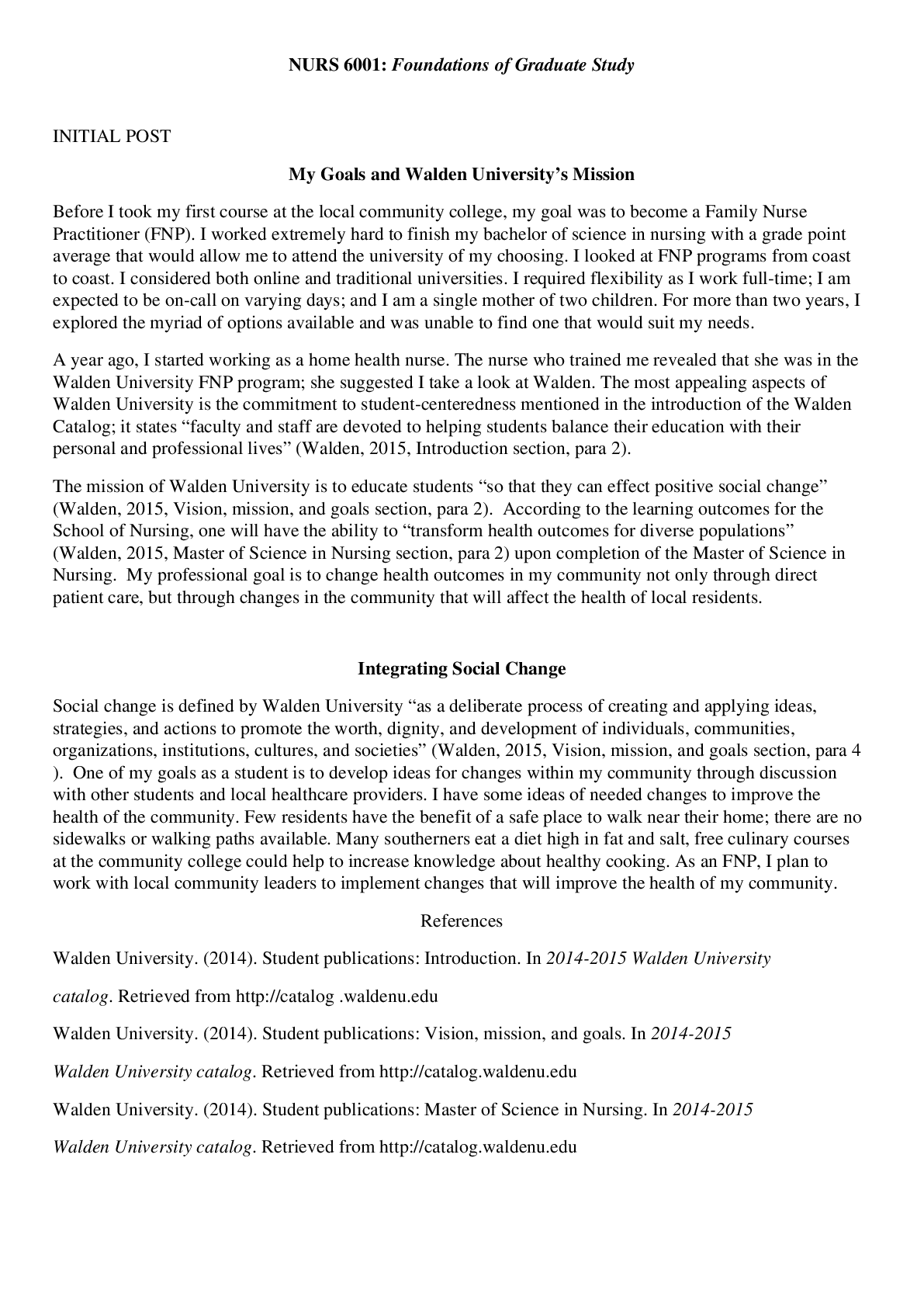*NURSING > QUESTIONS & ANSWERS > NRS 410V Week 1 Discussion Question, Case Scenario -Ms (All)
NRS 410V Week 1 Discussion Question, Case Scenario -Ms
Document Content and Description Below
The case scenario provided will be used to answer the discussion questions that follow. Case Scenario Ms. G., a 23-year-old diabetic, is admitted to the hospital with a cellulitis of her left lower ... leg. She has been applying heating pads to the leg for the last 48 hours, but the leg has become more painful and she has developed chilling. Subjective Data ● Complains of pain and heaviness in her leg. ● States she cannot bear weight on her leg and has been in bed for 3 days. ● Lives alone and has not had anyone to help her with meals. Objective Data ● Round, yellow-red, 2 cm diameter, 1 cm deep, open wound above medial malleolus with moderate amount of thick yellow drainage ● Left leg red from knee to ankle ● Calf measurement on left 3 in > than right ● Temperature: 38.9 degrees C ● Height: 160 cm; Weight: 83.7 kg Laboratory Results ● WBC 18.3 x 10¹² / L; 80% neutrophils, 12% bands ● Wound culture: Staphylococcus aureus Critical Thinking Questions 1. What clinical manifestations are present in Ms. G and what recommendations would you make for continued treatment? Provide rationale for your recommendations. As per Lewis, Dirksen, Heitkemper, and Bucher (2014) the typical clinical manifestations are “Hot, tender, erythematous, and edematous area with diffuse borders. Chills, malaise, and fever” (p. 434). The objective clinical manifestations of cellulitis present are the fever, as presented by a temperature of 38.9 degrees C (102.02 degrees F), the swollen left calf as evidenced by the increase in 3 inches compared to the right calf, the erythematous skin on the left leg from knee to ankle, as well as the visible open wounds with thick yellow drainage. Ms. G also reports that the leg is painful and she feels chills. As per Lewis et al. (2014), continued treatment would involve “Moist heat, immobilization and elevation, systemic antibiotic therapy…” (p. 434). The leg is painful when distributing weight on it, so it is best to keep weight off it, also the patient is at risk for falls, so it is best to do this. Lewis et al. (2014) also states that wet dressings help decrease inflammation, promote comfort by soothing the affected area, helps promote absorption of any topical creams or ointments prescribed for the affected area, and also to aid in the removal of infected skin and pus as this is highly infectious. Elevating the leg can also help reduce swelling. Recommendations to the attending physician/doctor would also be made for antibiotic treatments to the affected area, and possible IV or oral antibiotics, such as vancomycin, as the lab results show elevated WBC and positive for Staphylococcus aureus. Additionally, a request for a pain relievers and fever reducer, such as acetaminophen for starters, as Ms. G is presenting with fever and is in pain. Furthermore, corticosteroids or some other form of anti inflammatory agent can be recommended to the physician to aid with the swelling, inflammation, and redness of the affected extremity. As Ms. G is diabetic, continued monitoring and management of her blood sugar levels will be recommended, as blood sugar tends to rise due to infection, stress, and use of corticosteroids. 2. Identify the muscle groups likely to be affected by Ms. G's condition by referring to "ARC: Anatomy Resource Center." The wounds are located above the medial malleolus of the left lower extremity. The affected muscles likely affected, as visible on the Anatomy Resource Center provided by Grand Canyon University (n.d.), are the flexor digitorum longus, and soleus as they are in close proximity of the medial malleolus. As the affected area is the leg from ankle to knee, other muscles such as the gastrocnemius, fibularis brevis, extensor digitorum longus, and the flexor hallucis longus may additionally be affected. 3. What is the significance of the subjective and objective data provided with regard to follow-up diagnostic/laboratory testing, education, and future preventative care? Provide rationale for your answer. Subjective data is what the patient reports, if the patient reports they are in pain then we must take measures to help alleviate the pain. Requesting a pain killer/reducer can assist with this and would help comfort the patient. Ms. G also reports chills, as a nurse we can offer blankets or control the temperature in the room to help with the feeling of cold. She has also stated that she cannot put weight on the leg, this would further alert the healthcare team to implement fall prevention measures. Ms. G reports she lives alone, this is important because it is indicative of what support system she has and what possible resources and aid can be offered to her upon discharge. Ms. G has difficulty walking, an aid may be needed as well as recommendation to a physical therapist for an assistive device to aid in walking. The objective data allows us to measure and track the progression of the condition. As indicated, Ms. G has an elevated WBC count, neutrophil count, and band count. As per Lewis et al. (2014) these indicate inflammation and infection, thus these are indicators that are used to identify the effectiveness of the treatment. The presence of an open wound and yellow drainage is indicative of an infection as well, and is contagious. Education would be provided on antibiotic treatment regimen, to complete the course of antibiotics as indicated even if clinical manifestations and other symptoms lessen or altogether go away; this is to ensure the infectious agent is eradicated. Ms. G will be taught on proper hygiene to prevent spread of infection or recurrence, as well as educated on signs and symptoms of disease process. 4. What factors are present in this situation that could delay wound healing, and what precautions are required to prevent delayed wound healing? Explain. Ms. G is a diabetic and has no one to aid her with meals as documented on the report. Uncontrolled diabetes can result in further complications that may have resulted in her development of cellulitis. Adequate nutrition would be required to aid in the wound healing process, but also to manage blood sugar to prevent further complications of infection. Per the provided information, it is possible Ms. G lacks the ability to care for herself, she has no one to aid in preparation of meals, developed an infection, and is overweight, as evident by her stature and weight. These are possible indicators of self neglect. Further assessment of Ms. G’s knowledge on diabetic control must be done prior to diabetic education. Once an assessment has been done, education can be dispensed on wound care and nutrition. Consulting the social worker can aid in acquiring assistance for Ms. G to ensure her recovery. References Grand Canyon University. (n.d.) ARC: Anatomy Resource Center. Retrieved from http://lc.gcumedia.com/bio155l/anatomy-resource-center/v2.1/#/main Lewis, S. L., Dirksen, S. R., Heitkemper, M. M., & Bucher, L. (2014). Medical-Surgical Nursing: Assessment and Management of Clinical Problems (9th ed.). St. Louis, MO: Elsevier MOSBY [Show More]
Last updated: 1 year ago
Preview 1 out of 3 pages
Instant download

Buy this document to get the full access instantly
Instant Download Access after purchase
Add to cartInstant download
Reviews( 0 )
Document information
Connected school, study & course
About the document
Uploaded On
Apr 07, 2020
Number of pages
3
Written in
Additional information
This document has been written for:
Uploaded
Apr 07, 2020
Downloads
0
Views
49

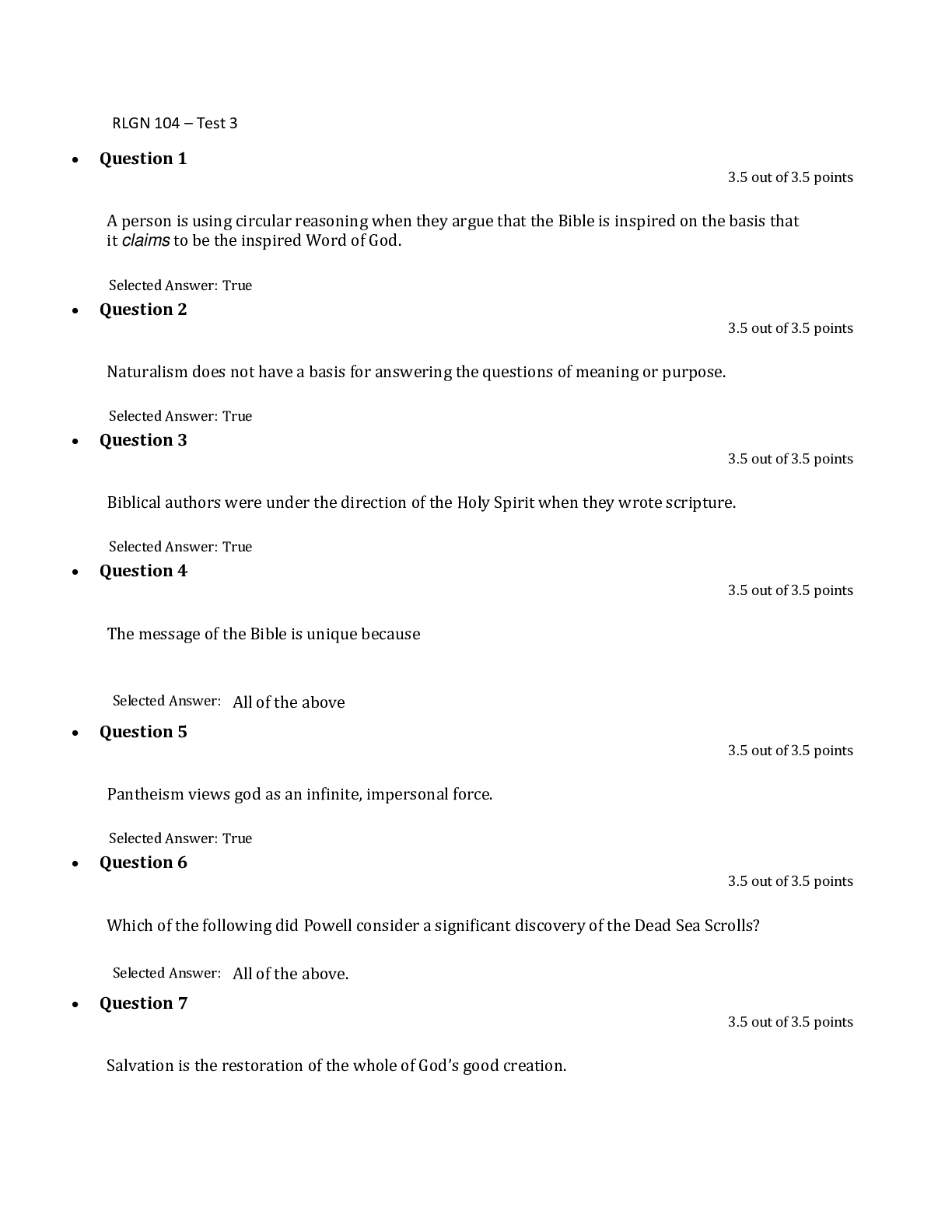


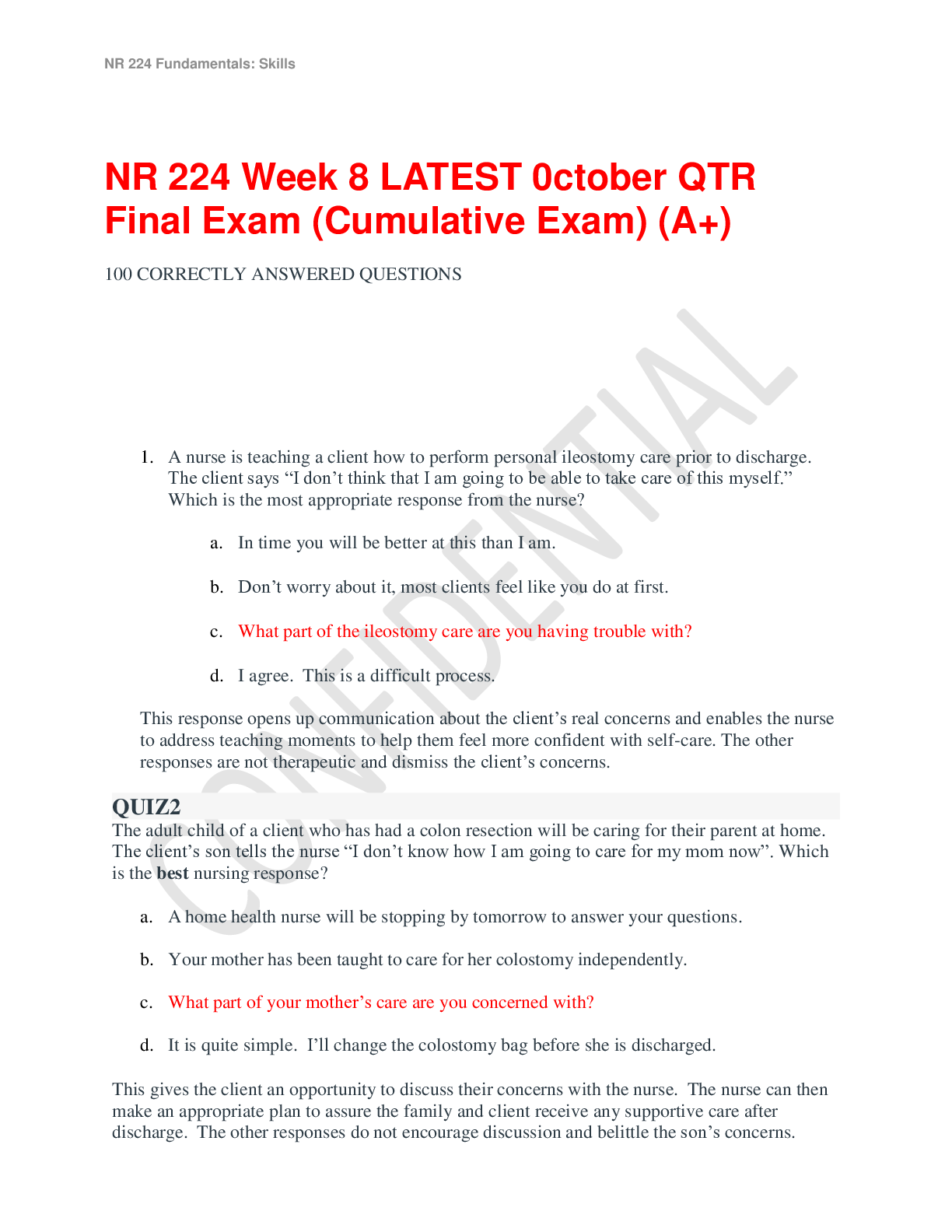


.png)




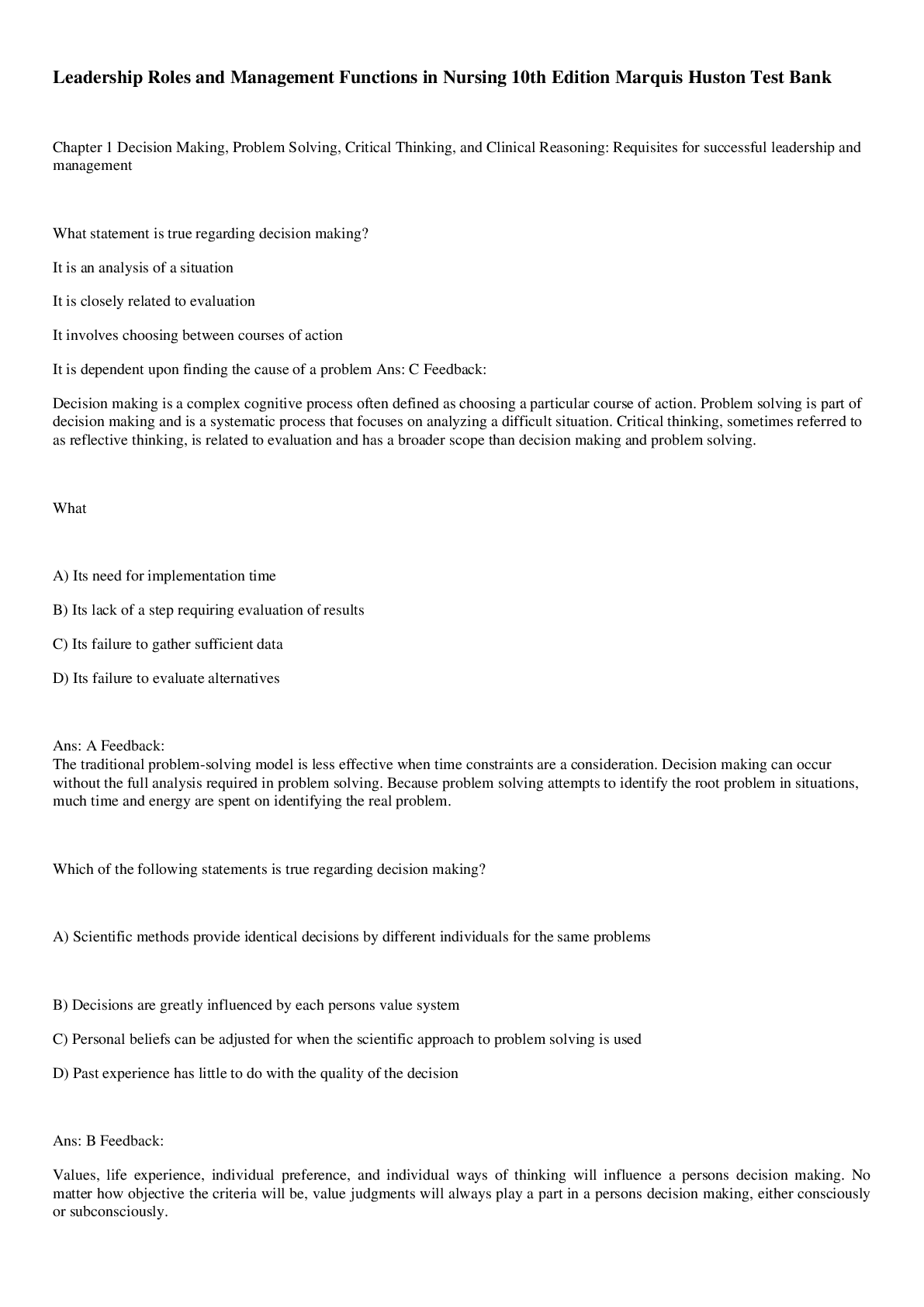
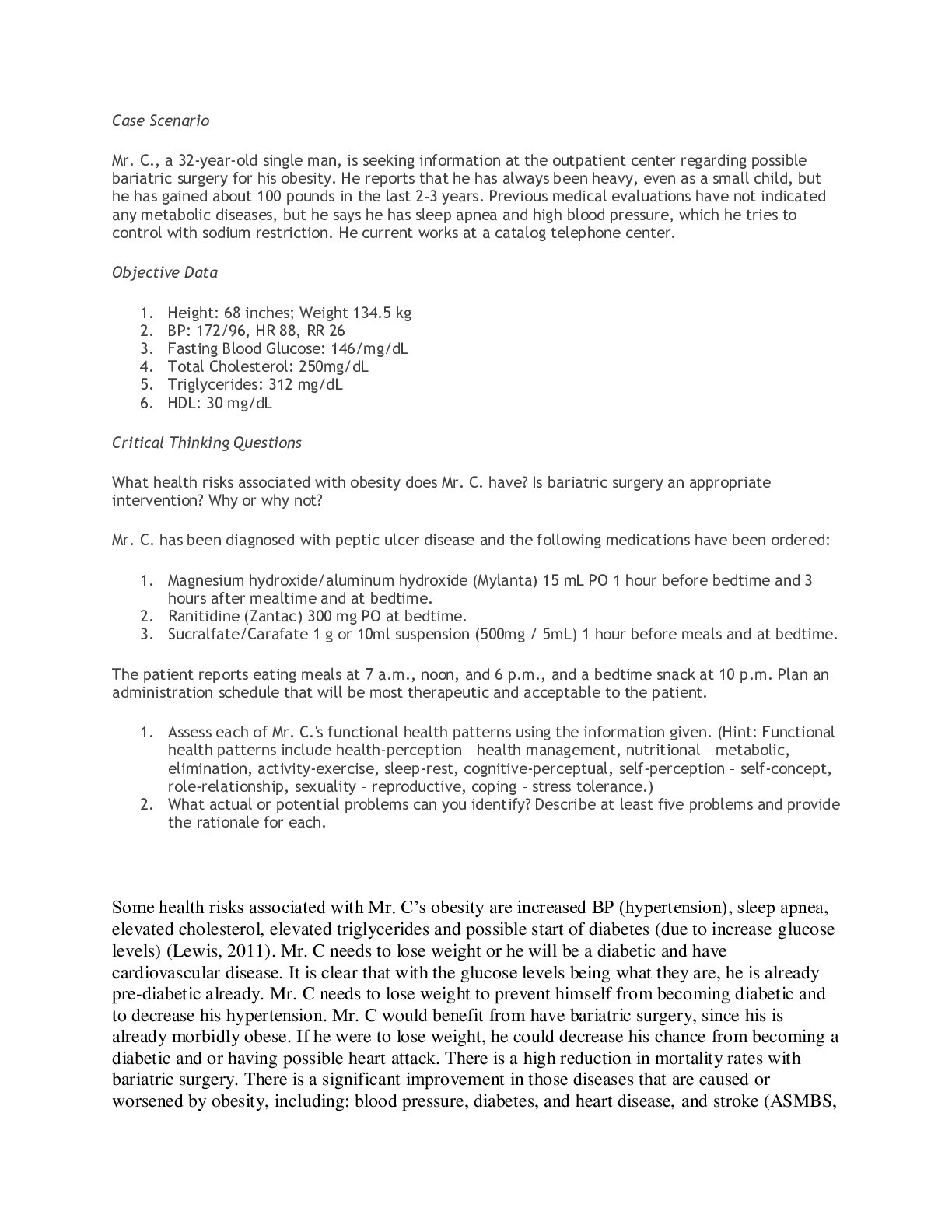

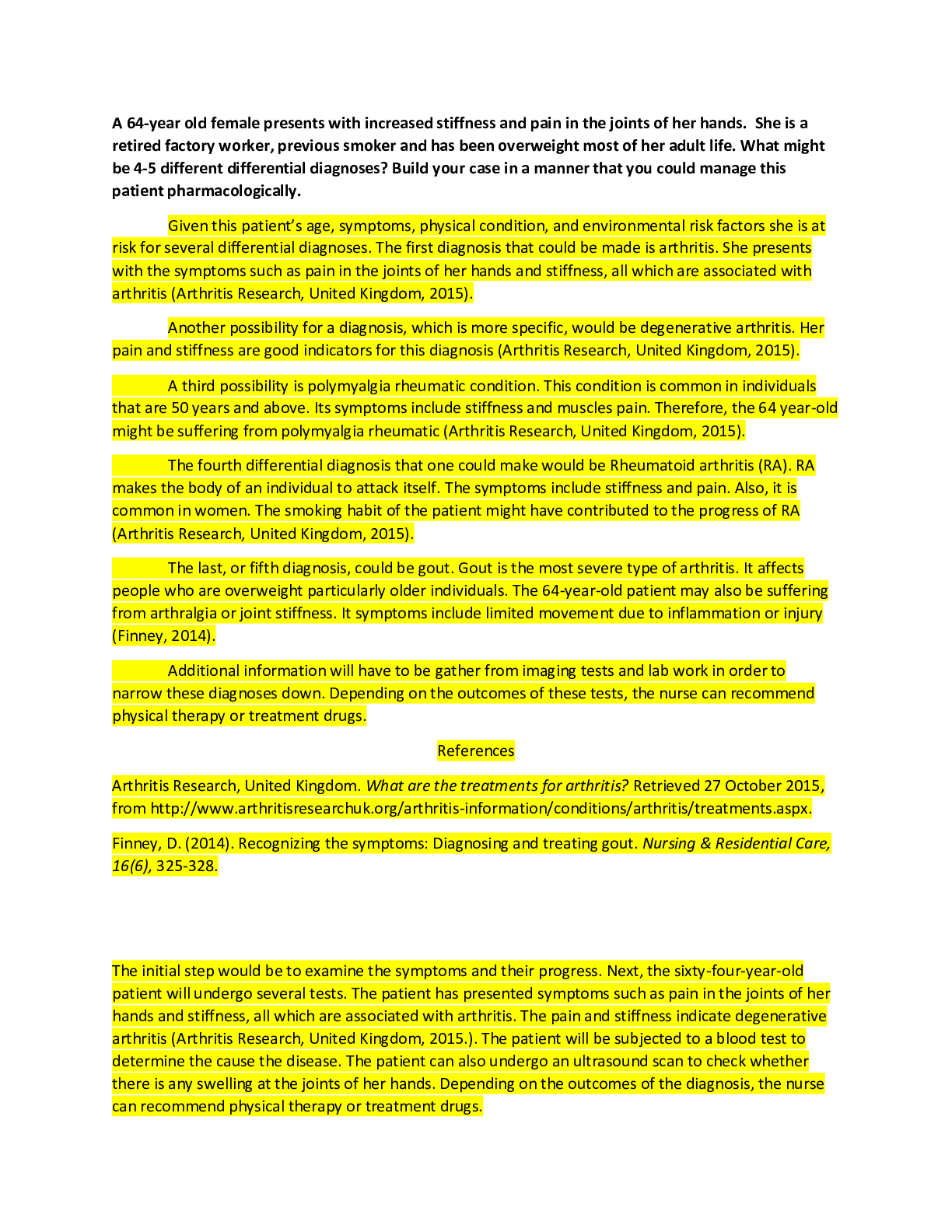
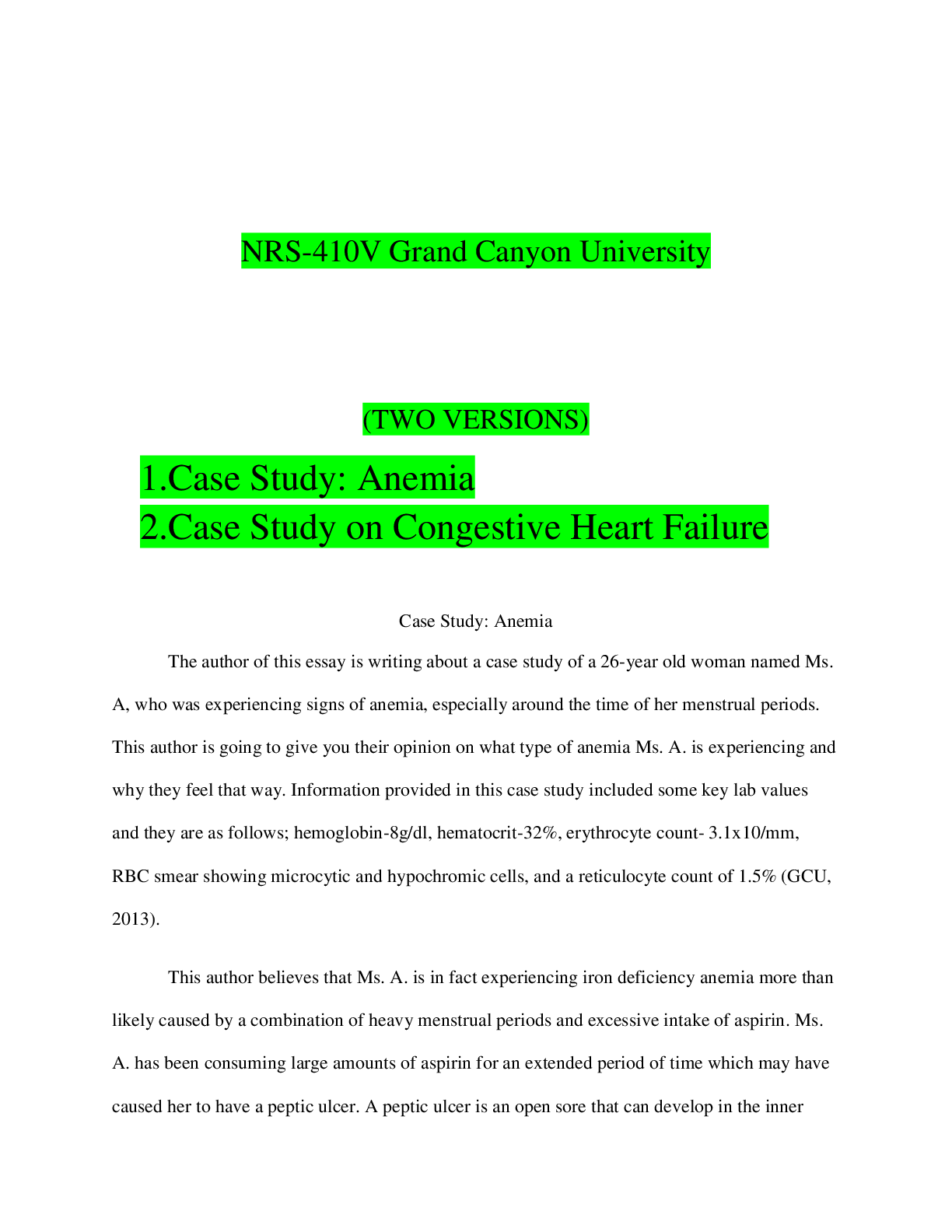
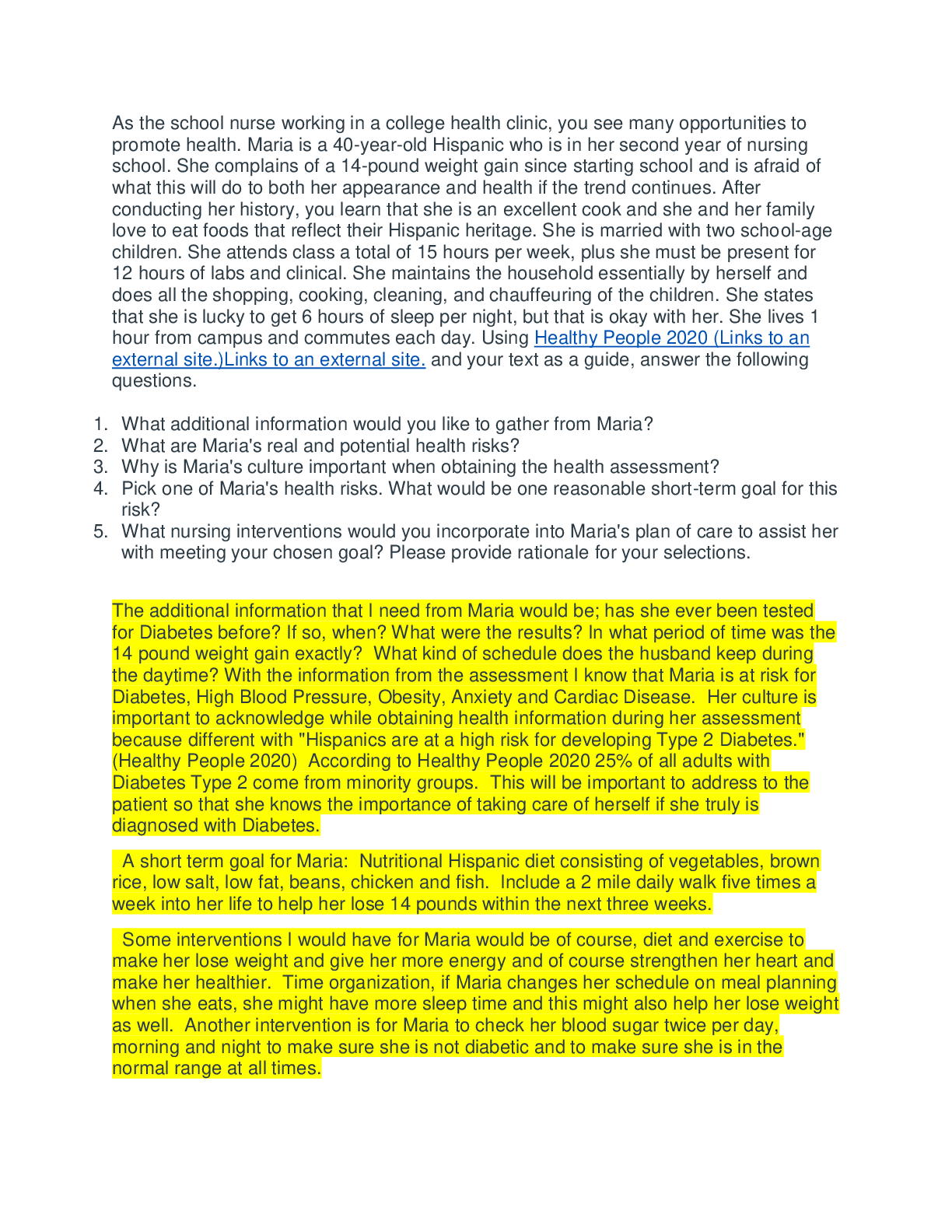
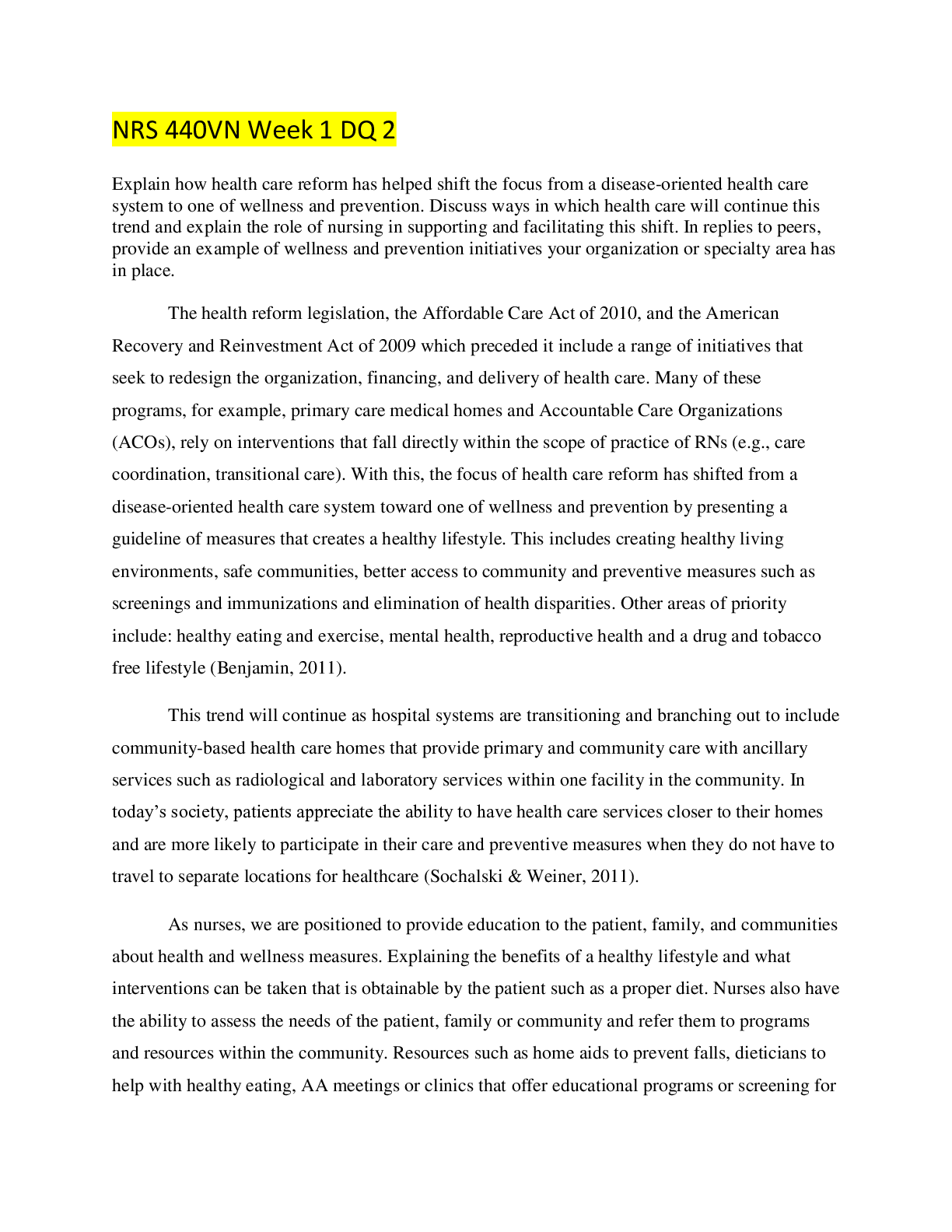
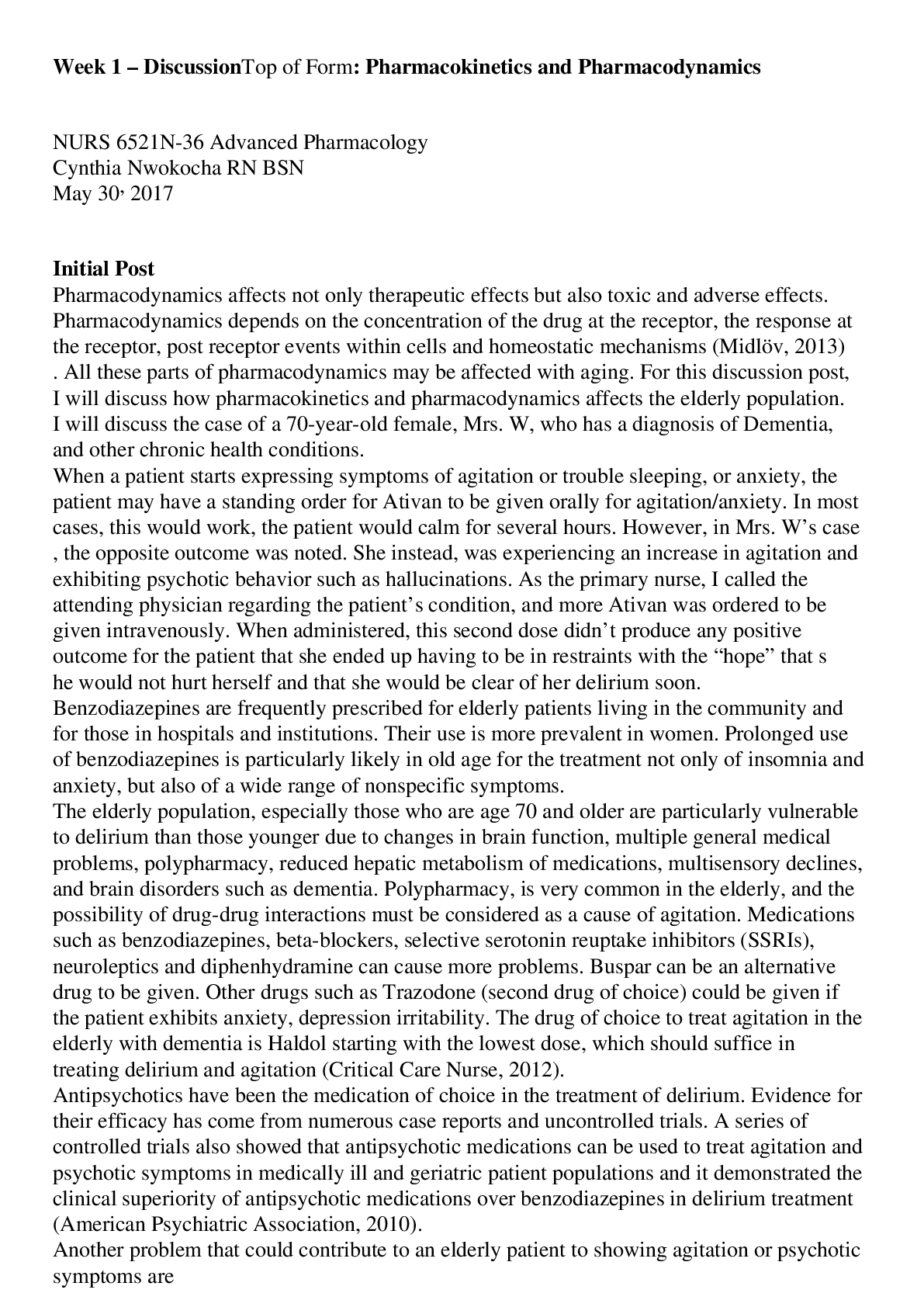

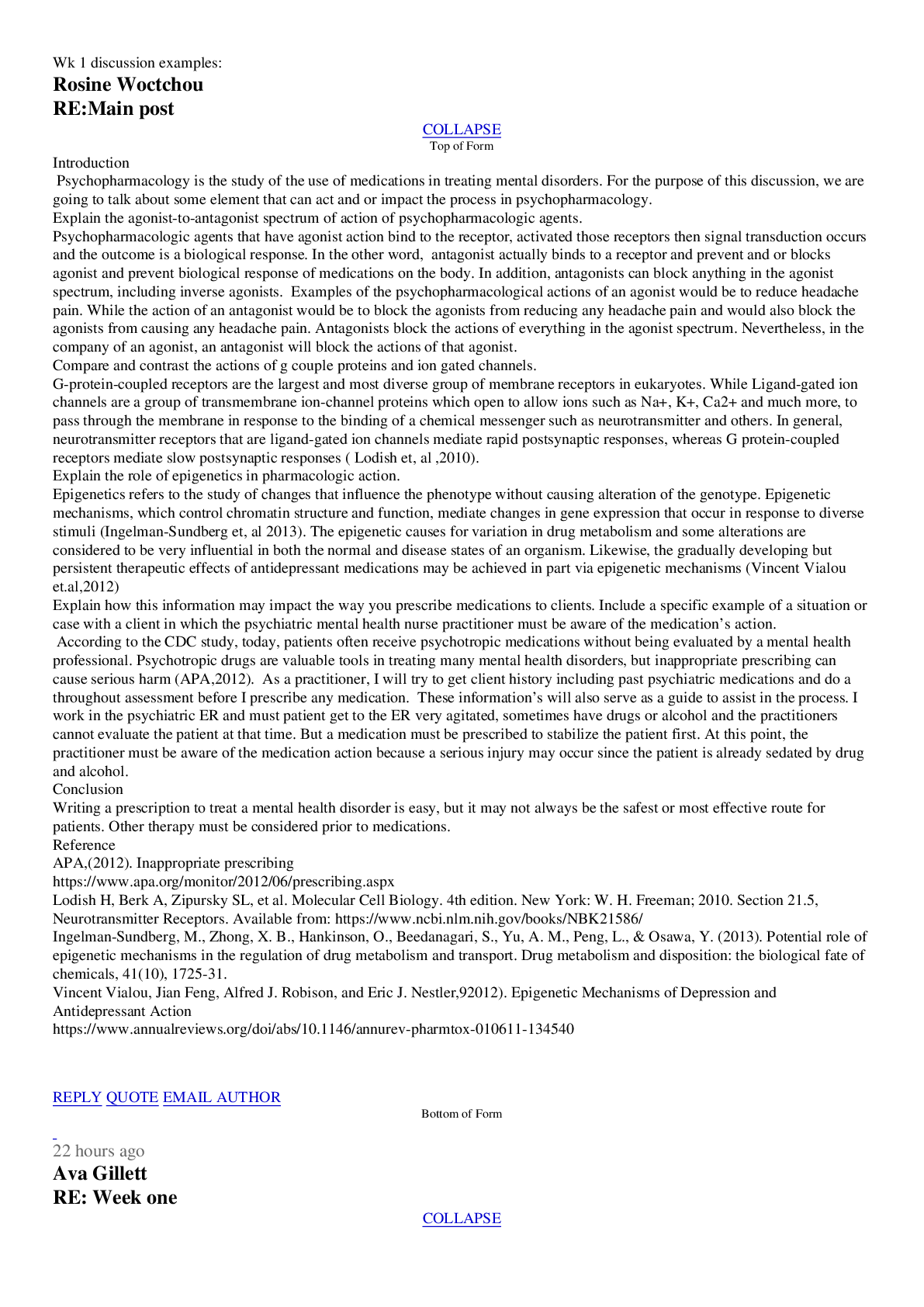
.png)
